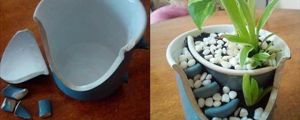Featured Posts

I wish I had a fort

The powerof positive thinking

NASA

Pray for Australia

Take care of each other

She has emerged

My soul feels so much better

I just ordered one. #Just2019HispanicThings

He really wanted his photo at the Halloween party, but was super scared of the spiders

The Only Thing More Contagious Than COVID19 Might Be This Fox's Smile
About
FAQ
Contact
Rules
Terms
Privacy
Feedback
Keyboard Shortcuts:
Previous Post · Next Post · + CTRL Skip Post
Previous Post · Next Post · + CTRL Skip Post
© 2025 FunSubstance · funny and entertaining pictures, memes, gifs & videos.



If your food is cold and the container is hot you are using the wrong container for the food. The first thing to consider is wether the material of the dish reflects microwaves or allows them to pass through. If microwaves can’t easily pass through the dish- you’ll get poorer results. A dish that leaves as much of the food exposed as possible with minimal excess- a plate instead of bowl where practical, a bowl with lower walls, etc. but the material is very important.